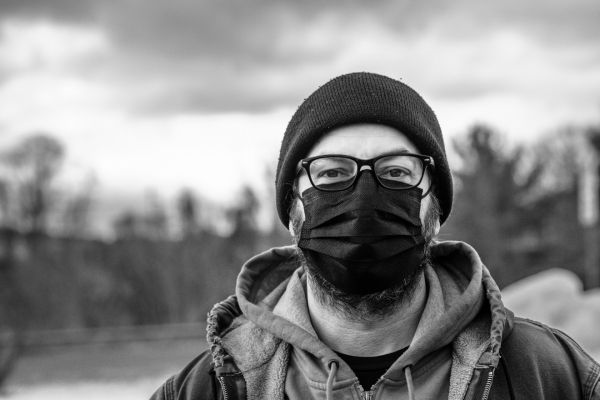BRATTLEBORO — Adapting his work to the global pandemic, photographer Ezra Distler is creating black-and-white portraits of essential workers.
Distler, who has taken “maybe 1,500 or more” portraits of townspeople over the years, had received a grant last year from the Arts Council of Windham County for the Brattleboro Town Arts Fund to continue his work, with a focus on at-risk communities.
“I applied in January, and got approved, I think, in February,” he said. “And then in March, everything changed.”
Distler was permitted to continue the project with a new focus on the importance of the impacts and struggles of those most affected by the pandemic - essential workers.
“In this moment, it felt important to focus on the essential workers,” he said.
Distler, who worked at the Brattleboro Food Co-op for a decade before he was able to sustain himself as a photographer, said he wanted to support his former co-workers and those like them who were still working in public and potentially exposed to the Coronavirus during the lockdown.
“We generally just sort of take it for granted as like the functioning parts of our society,” he said. “It's like the grocery workers - like a part of this machine that allows us to go in and buy food.”
“I'm sure you remember that feeling right at the beginning, when you're like, holy shit, I can't believe I haven't been appreciating my grocery worker as much as I should,” said Distler, whose photos have been appearing as a series in the Brattleboro Reformer.
The power of a portrait
Distler wants the process of his photography to be as “frictionless as possible” - to be able to portray the workers naturally and capture how he believes they should be appreciated.
“There are too many people and too many essential workers to get everyone, but I genuinely would love to photograph the people who deserve to be highlighted.”
In some cases he is contacted by different businesses for nominations of their workers and to spotlight their hard work.
“I got an email from someone at one point saying, 'Hey, the folks at the Humane Society are doing great work. And they're working hard through this pandemic,'” he said.
Distler, accustomed to a highly controllable studio work environment, adapted to a new approach: taking photos of the essential workers on site, yet still creating his distinctive black-and-white portraits of the essential workers in their own work environments.
By removing the color, he finds the focus returns to the people themselves. “I'm not sure exactly what it is - when it's not a portrait, a black and white photograph helps you see just form and lines and shapes and patterns,” he said.
“People really respond to black-and-white photography,” he pointed out.
Distler has a different relationship to his portraits than his audience.
“There's something that the audience gets out of it that I can't get, because I'm too close to it. [...] There's all this complexity that's not there for the audience,” Distler said.
He believes that a photo should tell a story of its own, in a way that doesn't require the viewer to have background knowledge of or relationship with the subject.”
“To the viewer, it's just human,” he said.
Distler said he will explore the depths of his own art and how it affects others. He hopes his photography continues to encourage people to spread kindness, as well as vulnerability in one another, now and after this pandemic.
“If you can look this person in the eyes, you can feel a little bit of that human connection,” he said. “And that feels particularly important these days, you know?”
